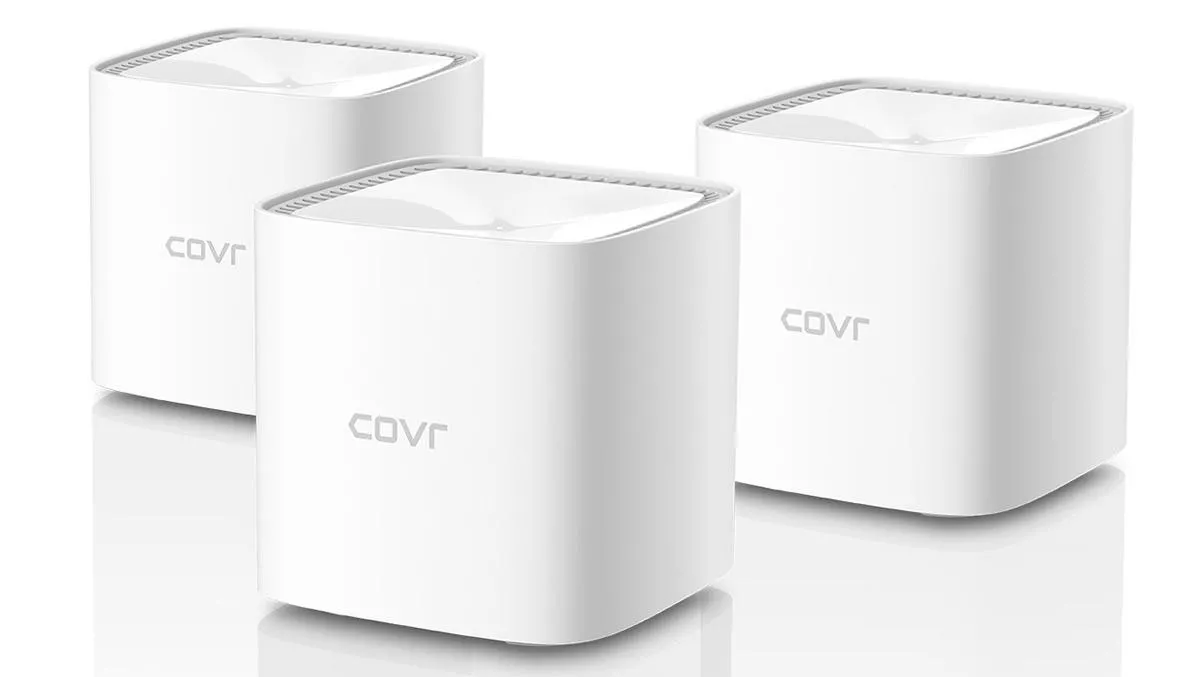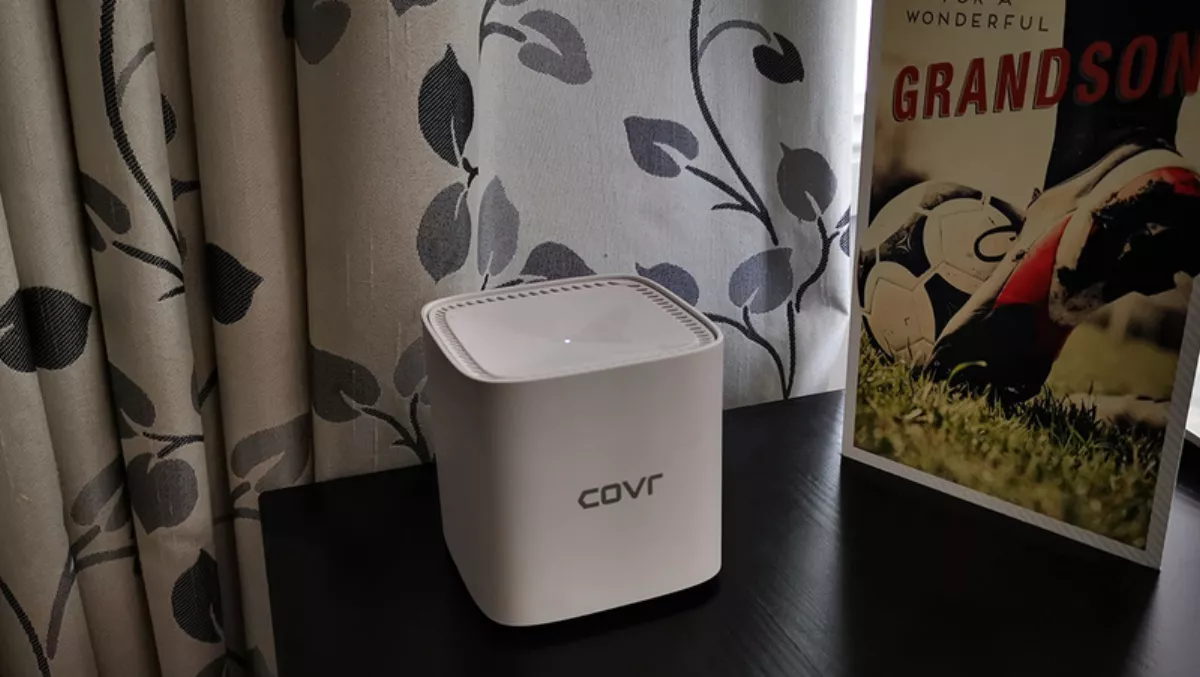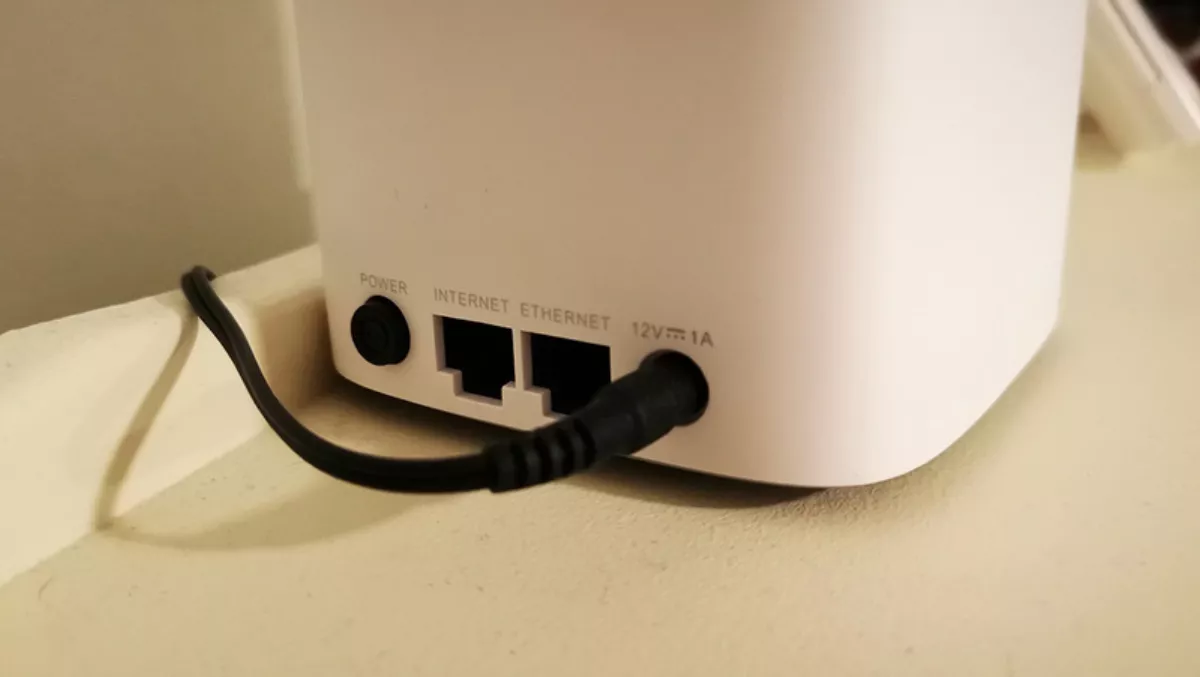
The demand for a robust domestic Wi-Fi network has exploded as more and more workers are now working from home. Once a handy way to scroll on your phone whilst streaming Netflix wireless home Internet is now, for many, the only way to effectively work remotely.
One of the benefits of working from home is that you are not necessarily confined to one area. You can respond to emails whilst watching the evening meal cooking in the kitchen, and you can escape to the bedroom if the house becomes too noisy to take than an important video call. None of the above is happening if you don't have reliable wireless Internet connectivity throughout your house.
D-Link picked the perfect time to send over their Covr-1103 mesh system for me to test. This kit contains three of D-Link's Covr-1100 wireless mesh-enabled access points. It is pre-configured to pair up with each other out of the box.
My wife, now working from home, has set herself up with a modest pop-up office in the corner of the bedroom. Unfortunately, the bedroom, as well as one of the kid's rooms, has always been a bit of a Wi-Fi blackspot. It's OK for routine Internet stuff, but no good for video conferencing etc. My wife quickly found this out and turned to me as the resident IT guy for a solution. Enter D-Link and their COVR-1103 system.
These dual-band AC1200 units are discrete white cubes measuring approximately 100mm on each side. Their small size means that they don't look too out of place, and certainly better than a flashing router. Perfect for a small working area that gets packed away each day.
Whilst you may not want one sitting pride of place in the middle of your lounge coffee table, they blend into your room décor pretty easy sitting on a shelf or a side table. They can be physically positioned anywhere in reach of an electrical socket.

The Covr-1103 is easy to set up. You just plug one of the units straight into your existing modem or router, fire it up and follow the instructions in the D-Link Wi-Fi app.
The second unit is then switched on and automatically paired to the first, you then repeat this with the third unit. This creates three access points with the same wireless network SSID and password. Devices set up to use the Covr-1103 mesh Wi-Fi will dynamically switch to the strongest signal.
Extra access points can be added to further extend the coverage area to create huge seamless wireless networks. Adding more Covr access points is easy, again, just by scanning the QR code on the new devices and following the instructions on the mobile app. I added D-Link's two-access point Covr-1102 kit to the network with no problem, creating a mesh of five access points encompassing the entire house (and likely some of the street as well).
I connected the first Covr access point to one of the Ethernet ports on my router, as I use that for my VOIP telephone. For this to work properly, I switched the Covr-1103 network to bridge, avoiding leaving the router to assign device Ips and administer the network. The Covr network did work without switching it to bridge, but I ran the risk of IP conflicts with two devices allocating network addresses.

I'm not sure what networking magic D-Link are employing with this kit, but not only did the Covr-1103 extend the Wi-Fi network to a previously out-of-reach area, it also considerably boosted the wireless Internet speed.
The kit uses MU-MIMO (multi-user multi-input multi-output) tech to allow many users to connect simultaneously without having to wait for their turn. The units boast AC1200, meaning network speeds of up to 1200 Mbps, which should be more than enough. Network speeds like this would be very much dependent on things like line-of-sight and the material of any obstruction between the devices. However, users should be able to stream 4K TV, play online games wirelessly without trouble.
My house has theoretical max Internet speed of 100Mbps down and 40Mbps up. The wired Ethernet SpeedTest result got me 98.28Mbps down and 37.70Mbps up. The Wi-Fi SpeedTest, some 25m from the nearest Covr-1103 access point (and with a brick wall in the way), was… 101Mbps down and 35.3Mbps up. So, for me, the Covr-1103 Wi-Fi network is fast enough to provide Internet coverage across my house with no speed real speed degradation.
It is worth noting, however, that whilst the Ethernet connection had a Ping (the time it takes the signal for the client device to get to the remote server and back again, in milliseconds) of 5ms. This would be considered an optimal Ping for multiplayer gaming. The Covr unit delivered a Ping of 19ms, still good, but a slightly slower delivery.
The Covr-1103 network works by connecting your Wi-Fi device to the closest Covr unit. The signal is then broadcast from the remote Covr access point to the Covr access point connected directly to the modem/router. This is the likely cause of that small, rather insignificant delay.
Once the devices are in place, there's no need to touch them anymore. The network can be entirely controlled via the D-Link Wi-Fi app. Client devices can be monitored as well as changes made to the network password.

D-Link's Covr-1103 provided not only a great solution to my home's Wi-Fi blackspot area but also a fantastic boost to wireless Internet connection speeds. The system worked out of the box, exactly as it should, the set-up guided by the easy-to-follow instructions from the D-Link app. Connecting the additional two Covr-1100 units from the Covr-1102 kit, extending the wireless network even further, was just as painless.
If you are after an easy-to-use mesh wireless network solution, D-Link's Covr-1103 offers a complete, yet extendable system that should do the job for you. For smaller properties, the two-unit Covr-1103 kit may also be an option.
